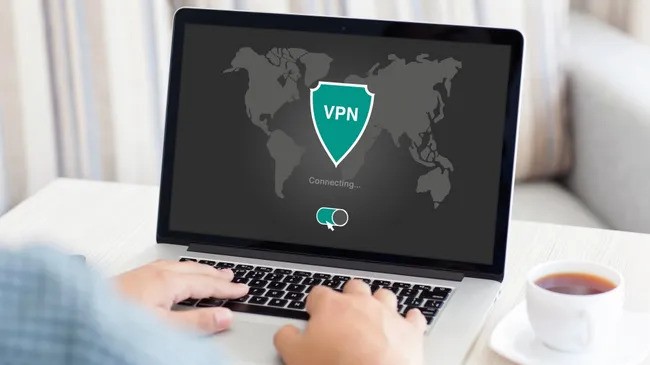VPN vs Remote Desktop
Which is better for connecting to the office?

VPN and Remote Desktop can both be excellent remote access solutions, in that they can help workers to access business resources when outside the office. Still, there are also some important differences between the two.
In this guide you'll learn more about VPNs vs Remote Desktop software, to help you decide which is best for you.
What is a VPN?
VPNs (Virtual Private Networks) were originally invented as a way to extend an organization's private network over the internet, so it could be accessed remotely by employees.
This is done by establishing a secure, encrypted connection to a VPN server. This means that whilst using a VPN, anyone with access to your ISPs records can't read data passing between your device and the server.
Using a VPN also means that as far as the internet's concerned, your IP address is that of the server, not your device. This makes it easy to hide your location and avoid being targeted by hackers.
What is a Remote Desktop?
Remote Desktop is sometimes referred to as RDP (Remote Desktop Protocol) or screen sharing.
Some operating systems like Windows 11 have built-in support for remote desktop but you can also use remote desktop via popular programs like Teamviewer and Splashtop.
Remote Desktop involves connecting directly to another computer to allow you to use it in the same way as someone physically using the mouse and keyboard. When you establish a remote desktop connection, the software records the keyboard and mouse inputs and sends them to the remote computer. Usually you can see the results of this through a window containing a video of the desktop on the remote machine.
What are the key differences between a VPN and a Remote Desktop?
Both Remote Desktop and VPNs can be used to access resources on another network, so have strong benefits for business. Still, they're different in a number of important ways including:
Scope
Modern VPN services are designed to allow 'clients' to connect to the internet securely via a VPN server. This can be advantageous if you're trying to access content normally blocked in your country or to protect yourself from spying by an ISP.
Still, if you need to access a single computer in order to use software and files in your workplace, Remote Desktop is a better solution, as VPN's don't have any built-in support for simple tasks like sending documents to your office printer.
Security
Most Remote Desktop programs use some form of encryption to secure the connection between your device and the remote computer. For instance, Teamviewer claims to use 4096 Bit RSA private/public key exchange and 256 Bit AES session encoding, though as the company doesn't publish its source code, you'll have to take their word for it.
There are free remote desktop alternatives like RustDesk that are open source if this is a concern for your business, as well as open source implementations of Microsoft's RDP but the fact remains you have to trust that most popular Remote Desktop software hasn't been compromised. This can happen : in 2022 alone, over 9,000 VNC (Virtual Network Connection) servers were found to have been left completely unprotected, in theory allowing anyway to connect remotely to desktops on connected devices.
Even when this software is properly coded, remember that when using it someone can access any program, file or database in the same way as if they were sat at a computer in your office. This means if cybercriminals gained access to your Remote Desktop login credentials, it could lead to a serious security breach. This is a particular risk if the remote user has administrator rights.
On the other hand, all reliable VPN services make use of a number of secure VPN protocols to secure the connection between devices and VPN servers. Most offer access via the OpenVPN protocol, as well as instructions on how to establish encrypted connections via open source clients, such as OpenVPN Connect.
Overall this gives VPNs a greater edge when it comes to security as there's much more transparency over how connections are encrypted, as well as the software clients you use.

Access control
As we've learned, accessing an office machine via remote desktop means a user can do anything they normally would whilst sat at their desk - but this cuts both ways.
If, for instance, the network administrator has designated that a user can't access certain folders or programs, they'll still be restricted even if the user tries to open them remotely.
The situation with VPNs is less clear. By default users connected to a network can access most files and resources. If you manage a corporate VPN it is possible to implement ZTNA (Zero Trust Network Access) policies. For instance, OpenVPN server supports network segmentation and ACLs (Access Control Lists) to make sure only authorized users can access certain areas.
Still, this requires extra time and resources to configure your VPN server. Workers using Remote Desktop have exactly the same access rights as they always had, so no extra set up is required.
Speed
When using Remote Desktop, you're effectively setting up a streaming video displaying the remote machine. As you move the mouse and type the keyboard to make changes, the video refreshes and is streamed back to your own device.
There are times when this may not be particularly noticeable e.g. when using Remote Desktop to access another computer within your organization's local network but otherwise it's likely to be a huge hog on bandwidth.
Using a VPN means your device will connect directly to a VPN server, without using streaming video. From there workers can use other, faster methods to access files resources - for example by using the command line to copy and move files.
When should I use Remote Desktop?
Despite its differences with VPN, there are times when using Remote Desktop is the best solution. These include:
If you've ever had technical troubles in the office, you'll know that the IT department tends to access your desktop remotely in order to view your screen. Crucially this allows them to see the same issue as you do, then fix the issue. Speed also isn't usually an issue if they're using Remote Desktop within the same local network.
If you need to use resource-intensive software e.g. CAD or graphic design, Remote Desktop is an excellent way to dial in to your high-spec work machine from a more modest device like a business laptop.
As all programs are being run on the office computer, it won't unduly impact system performance on your remote device.
Some businesses use their own software solutions, or use programs which are no longer widely supported. While it may be possible to access platforms like these via a VPN, it can cause compatibility issues.
Remote Desktop, on the other hand, allows you to run software on the local computer itself, meaning you can access legacy/proprietary systems in the same way as you would in the office.
When should I use a VPN?
Remote Desktop has its uses but there are times when deploying a secure VPN is the best choice. These include:
As Remote Desktop relies on connecting to a specific machine, it won't function if said machine isn't powered on or is experiencing technical problems.
VPN servers on the other hand are constantly connected to the internet, allowing your workers to dial in at any time of day.
Having slated VPNs earlier for a lack of built-in access controls, this can actually be an advantage. If you need everyone within your organization to access shared resources equally like remote drives and files, a VPN is an excellent way to set this up out of the box.
New legislation like the GDPR mandate the use of encryption when handling sensitive personal data. Most countries have even more stringent regulations for finance and healthcare organizations.
While RDP traffic is encrypted, this isn't always done in a transparent and consistent way. VPNs on the other hand can make use of open source server software, protocols and clients to encrypt and secure customer data in transit.
Can I use a VPN with a Remote Desktop?
The short answer is yes. Accessing your Remote Desktop whilst connected to a secure VPN has a number of benefits.
Chief amongst these is security, as effectively your network traffic will be encrypted twice - once by the remote desktop software and again by your VPN client. This makes it much harder for hackers to decrypt.
Having both a VPN and Remote Desktop solutions also gives workers the choice to access their desktop via streaming video (convenient but heavy on bandwidth) or via other methods over VPN such as the command line (less convenient but very fast).
What are the alternatives to VPN and Remote Desktop?
If your organizations wants to take on remote workers, you don't have to choose between a corporate VPN and Remote Desktop software. There are any number of cloud platforms such as Microsoft Office 365.
Hosting your files and programs within the cloud offers a secure way for workers to access and collaborate on projects.
Discover 10 reasons to move your business to the cloud today.
Sign up to the TechRadar Pro newsletter to get all the top news, opinion, features and guidance your business needs to succeed!
Nate Drake is a tech journalist specializing in cybersecurity and retro tech. He broke out from his cubicle at Apple 6 years ago and now spends his days sipping Earl Grey tea & writing elegant copy.